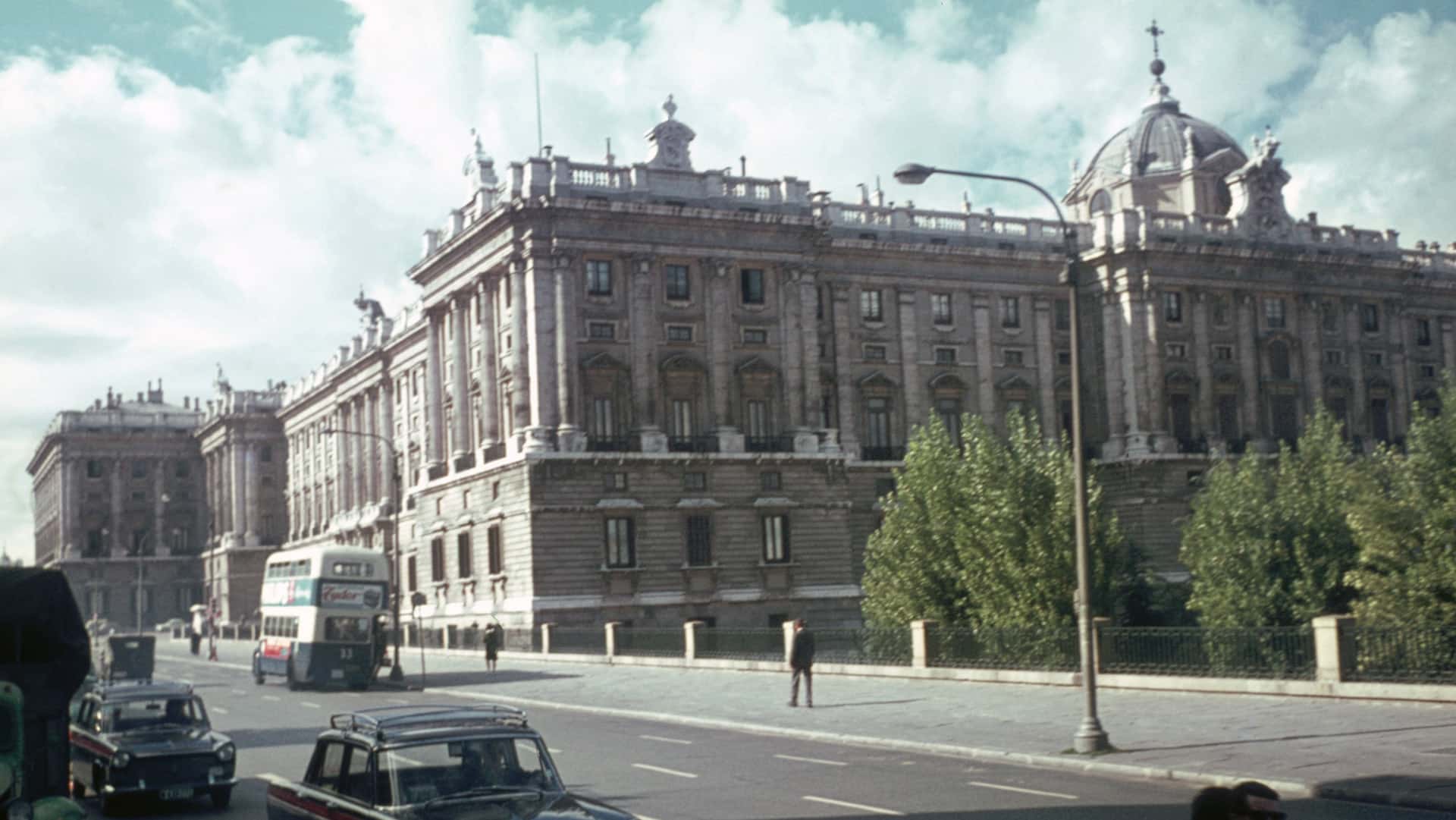General Franco, Spain’s right-wing dictator, died 50 years ago this week. He ruled with an iron grip for nearly four decades, after winning the 1936-39 Civil War. More than 200,000 went into permanent exile, around 20,000 were executed after the war was over and three million Spaniards emigrated to Europe in search of better employment prospects.
It might come a surprise then that just over one in five respondents in a survey published last month by the state pollster CIS said the Franco dictatorship was ‘very good’ or ‘good’. Most surprising of all is that nearly 20% of 18-24 year olds and 16% of 25-34 year olds said the same, although all of them were born long after Franco had died and when Spain’s transition to democracy had been consolidated (see Figure 1).
Figure 1. Do you believe the Franco dictatorship was very good or good for Spain and Spaniards (% of respondents by age group)
| % | |
|---|---|
| Total | 21.3 |
| 18-24 | 19.6 |
| 25-34 | 15.9 |
| 35-44 | 18.5 |
| 45-54 | 20.6 |
| 55-64 | 24.5 |
| 65-74 | 22.6 |
| Over 75 | 25.8 |
When Franco died, only 38% of the population (13.6 million out of 35.8 million) had been born before the start of the Civil War and hence directly experienced it and its aftermath. Among today’s population of 49 million, 56.8% were born after Franco’s death and have lived in a democracy.
A new biography of Franco by Giles Tremlett, published this month (El Generalísimo, Bloomsbury in the UK and Oxford University Press in the US) concludes that ‘the balance is overwhelmingly of harm: to the economic welfare, personal freedoms and cultural or intellectual life of the Spanish people’.
This statement, of course, begs the unanswerable question: what would have happened to Spain had Franco lost the Civil War and the Republican side won? Had it done so and if Spain had become part of the Communist bloc, as some historians believe, there is no doubt the economy, let alone political freedom, would not have fared well. The miserable state of Communist economies after the fall of the Berlin Wall is proof enough. Tremlett acknowledges that there was genuine support for Franco and that Spaniards were ‘freer, and better off, than people living in the Communist regimes behind the Iron Curtain’.
In the early years of the dictatorship Franco undoubtedly caused major ‘harm’ to Spain’s economic welfare. The post-Civil War period, known as the ‘Years of Hunger’ (1939-52), saw a largely man-made famine, the result of ultranationalist autarkic policies (economic self-sufficiency was part of Franco’s philosophy to ‘regenerate’ Spain). More than 200,000 people starved to death or died from diseases directly related to malnutrition, according to the recent and very well-documented book, La hambruna española (Crítica), by Miguel Ángel del Arco Blanco. Rationing lasted until 1952.
But by the time Franco died, per capita GDP had grown from US$408 in 1960 (earliest date) to US$3,207 in 1975, according to the World Bank, the economy was much more diversified (far fewer people toiled in agriculture) and the middle class was much larger (itself a classic sign of a more prosperous country). TV sets per 1,000 population rose from five in 1960 to 190 in 1973 and cars from 10 to 125.
Of over a hundred middle-income countries in 1960 only a dozen, including Spain, had become high-income by the turn of the century.[1] The great majority have remained stuck in the middle-income trap.
The much improved economic life, particularly after the 1959 Stabilisation Plan that ended autarky and transitioned Spain to a market-based economy, might explain why those over 55 in the CIS survey have a more favourable view of Franco’s regime.
The CIS survey followed another one by the same pollster, which showed that 38% of those under the age of 24 do not mind living with less democracy if it means a better quality of life, and one by 40dB in which one in every four men between the ages of 18 and 26 said dictatorship was ‘in some circumstances’ preferable to democracy.
Spain is not alone in having a significant proportion of young adults disaffected with democracy. Germany, for example, has a similar trend; communist East Germany collapsed after the fall of the Berlin Wall in 1989, 14 years after the end of the Franco regime, and became part of a reunified Germany. Most of the disaffection, expressed in support for the hard-right Alternative for Germany (AfD) party (152 of the Bundestag’s 630 seats), comes from those who live in what was East Germany (very much the poorer part of the country).
In the last 50 years Spain has profoundly changed. Spaniards as a whole have enjoyed a much higher standard of living (per capita GDP today is more than US$35,000), better health (average life expectancy has risen 11 years to 84), much wider educational and personal freedoms, and yet the dictatorship is viewed favourably by those who never experienced it.
One fundamental reason for this can be laid at the door of the education system. Secondary school students are taught very little if anything at all about the authoritarian past –much less, for example, than German pupils–. There is a common history curriculum set by the central government, but what is taught varies considerably and there is a lack of didactic material. The education system is decentralised to the 17 regional governments of varying political colours (currently 11 of them controlled by the conservative Popular Party –PP–, some with VOX’s support), and what is taught varies considerably.
The Socialist-led government’s 2022 Democratic Memory Law stipulates: ‘The Spanish education system shall include among its objectives the teaching of Spanish history and democratic memory and the struggle for democratic values and freedoms, covering in textbooks and teaching materials the repression that took place during the war and the dictatorship’. Three years on, little progress has been made; the PP and VOX view the law as indoctrination and refuse to implement it in the field of education.
Given their ignorance of the Franco regime, young adults fall prey easily to the disinformation propagated on social media, particularly that proclaiming ‘under Franco we lived better’.
When the CIS survey is broken down by party affiliation, the results clearly show the hard-right VOX (founded in 2013 and with 33 of parliament’s 350 seats) as the bedrock of the current support for the Franco regime. Among those who voted for VOX in the 2023 election, 61.7% said the Franco regime was ‘very good’ or ‘good’ and 41.6% among PP voters agreed (see Figure 2). Among men aged under 25, VOX is currently the leading party.
Figure 2. Do you believe the Franco dictatorship was very good or good for Spain and Spaniards (% of respondents by political affiliation)
| % | |
|---|---|
| Vox | 61.7 |
| Popular Party | 41.6 |
| Not old enough to vote in the 2023 election | 32.8 |
| Socialist | 7.4 |
| Sumar | 1.7 |
Spain’s deep political polarisation is graphically illustrated by the gap of 58.2 percentage points between Socialist and VOX voters (60.3% vs 2.1%) on whether the dictatorship was ‘very bad’.
Disaffection with democracy among those under 30 and a favourable view of the Franco regime go hand in hand. The lack of affordable housing is one of the main drivers (see Figure 3). The FOESSA foundation, linked to the Roman Catholic Church’s organisation Caritas, published a damning report this month on the rise since 2007 in inequality and social exclusion by age groups (see Figure 4). ‘Spanish youth is deeply pessimistic about its future, marked by job insecurity, difficulties in accessing housing, dependence on their families, and the impossibility of building an independent life’.
Figure 3. Spain’s five main problems for those aged 18 to 29 (% of respondents)
| % | |
|---|---|
| Housing | 30 |
| Economy | 26 |
| Immigration | 21 |
| Employment | 17 |
| Political problems | 16 |
Figure 4. Incidence of social exclusion, by age groups (%)
| Under 18 | 18-29 year olds | |
|---|---|---|
| 2007 | 7.3 | 6.4 |
| 2009 | 11.4 | 9.0 |
| 2013 | 18.2 | 14.4 |
| 2018 | 15.1 | 10.2 |
| 2021 | 22.0 | 14.1 |
| 2024 | 15.4 | 11.0 |
The rise in house purchase and rental prices has far outstripped the increase in salaries. Spain has one of the lowest percentages of social housing in the EU at 2.5% (EU average 9%), compared with 30% in the Netherlands and 20% in Denmark. The number of completed social housing units dropped from 53,300 in 2012 to 8,850 in 2023 but picked up in 2024, under a more concerted effort to alleviate the problem, when it reached 14,371.
According to Julio Rodríguez López, the Socialist head of the state’s Banco Hipotecario (Mortgage Bank), between 1985 and 1994 more than four million ‘protected’ homes of one sort or another were built during the Franco regime compared with 2.4 million between 1981 and 2022. The regime sought to turn proletarios (proletarians) into proprietarios (owners).
Immigration is another issue fomenting disaffection among young adults and disinformation in social media, particularly that propagated by supporters of the anti-immigrant VOX. Almost all of the more than 8 million rise in Spain’s population between 2001 and 2024 was due to net international migration. The government recently countered the idea that immigrants are a drain on the economy, with evidence showing that foreign workers contribute 10% of the social security system’s revenue and are responsible for 1% of its costs. The labour force participation rate of foreigners is almost 70%, much higher than the figure for Spain as whole (56.4%). Spain’s strong economic growth is significantly powered by foreign workers.
Fifty years after Franco, there is sadly no agreement between the two main political parties on how to remember the event. This was clearly shown at the end of last month when parties in parliament paid homage to the victims of Franco’s 1936 coup against the Republican government, of the Civil War and the dictatorship, except the PP and VOX (between them 170 of the 350 MPs), which boycotted the event.
[1] This is well documented by Oscar Calvo-González in his book Unexpected Prosperity (OUP, 2021).


